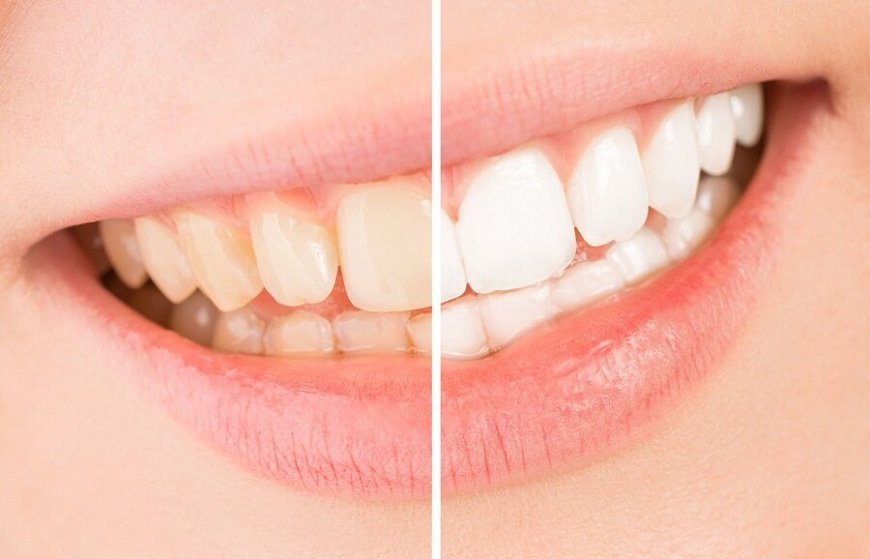The causes of discolored teeth
Discolored teeth are both a health problem and a cosmetic problem. No one likes to have visible stains on their teeth that others can easily

In this article, we cover the most common causes of stained and discolored teeth. It is possible to prevent it from occurring on time.
Discolored teeth are both a health problem and a cosmetic problem. No one likes to have visible stains on their teeth that others can easily see! In this article, we will address the most common causes of stained and discolored teeth to help you prevent it from occurring.
Dentists study the cause and morphology of abnormally colored teeth to discover how they should be treated and how they can be prevented. For patients, discolored teeth are also a cosmetic problem. Your smile and conversations should not be affected by discolorations that make your teeth look ugly. pjk
Let's take a look at some of the possible causes of this common problem.
Types of Discolored Teeth
Firstly, it is important to know that there are basically two types of discolored teeth:
- Superficial discolorations
This type of discoloration affects the outer layers of the tooth. They are often caused by pigmented residues from various drinks or foods. Wine, coffee and soy sauce can cause these.
Smokers can also get superficial discolorations on their teeth due to tobacco. But they can also appear due to aging and wear and tear on the teeth, even without having been exposed to these factors.
- Deeper discolorations
These stains affect the inner layer of the teeth. Trauma or birth defects can cause these.
Sometimes they can occur when a pregnant woman takes a certain drug during pregnancy, such as tetracycline. A particular condition that causes this is fluorosis from excessive fluoride intake.
More superficial discolorations can become deeper in cases where they penetrate to the underlying tooth tissue. A discoloration of the enamel, which is the outermost layer, can penetrate to the inside of the tooth to the dentin.
The causes of discolored teeth
Below you can read about some of the most common causes of tooth discoloration in the general population. They include the following:
- Over the years, tooth enamel darkens. Wear and tear thins the enamel and causes the inner layers, which have a different color, to show through.
- The diet. As we mentioned above, there are certain drinks and foods that can discolor teeth. Coffee is one of the main causes of discolored teeth. Red wine, carrots, citrus fruits and vinegar have an erosive effect on the enamel and can discolor the teeth.
- Nicotine turns your teeth brown.
- Natural color. Not all people have the same base tone on their teeth. From birth, different color shades can make the discoloration more obvious.
- Certain medications are associated with tooth discoloration, such as diphenhydramine and chlorhexidine. However, this only happens if they are consumed for long periods of time. Other drugs, such as tetracycline, interfere with tooth formation in childhood.
- When a person uses more fluoride than recommended, it builds up in the body, especially in the teeth. Fluoride in the teeth causes discoloration.
- This has mainly seen in children. While teeth are still developing, trauma can alter the growth process and result in a stain.
- Poor hygiene. Lack of brushing or poor brushing technique can lead to discolored teeth.
Different shades of discoloration of the teeth
Not all discolored teeth are the same. There may be different colors and shades, depending on the cause that caused the spots to appear. The color has important to the dentist who examines the patient with the discolored teeth, as it can help make a correct diagnosis.
White spots, for example, indicate fluorosis. The spots caused by the build-up of bacterial plaque are also white, which has more obvious the poorer the oral hygiene.
A brown color has usually due to food or drink. Tobacco also causes teeth to tan. A build-up of food residue causes yellow spots.
Yellow teeth indicate the presence of bacterial plaque, which occurs due to microorganisms that have found a good place to grow, due to lack of hygiene.
Green spots are more common in young people. Like yellow spots, they associated with poor tooth brushing. The green pigment behind this coloring has called phenazine and has caused by special bacteria and fungi.
Finally, black spots on the teeth come from high iron intake or due to medications such as chlorhexidine. Black spots are symptom of periodontitis.
How to avoid getting discolored teeth
You can use general guidelines to try to prevent stains from appearing on your teeth. Some of them are as follows:
- Improve dental hygiene. Brushing your teeth properly and often has the most important method of protecting your teeth.
- Go to the dentist. You should make regular dental visits to have your teeth examined and receive appropriate recommendations.
- Reduce the consumption of beverages such as coffee or soft drinks.
- Avoid starting to smoke or stop using tobacco products.
Have you noticed stains on your teeth?
In that case, the first step might be to make an appointment with a dentist to find out what could be causing them.
